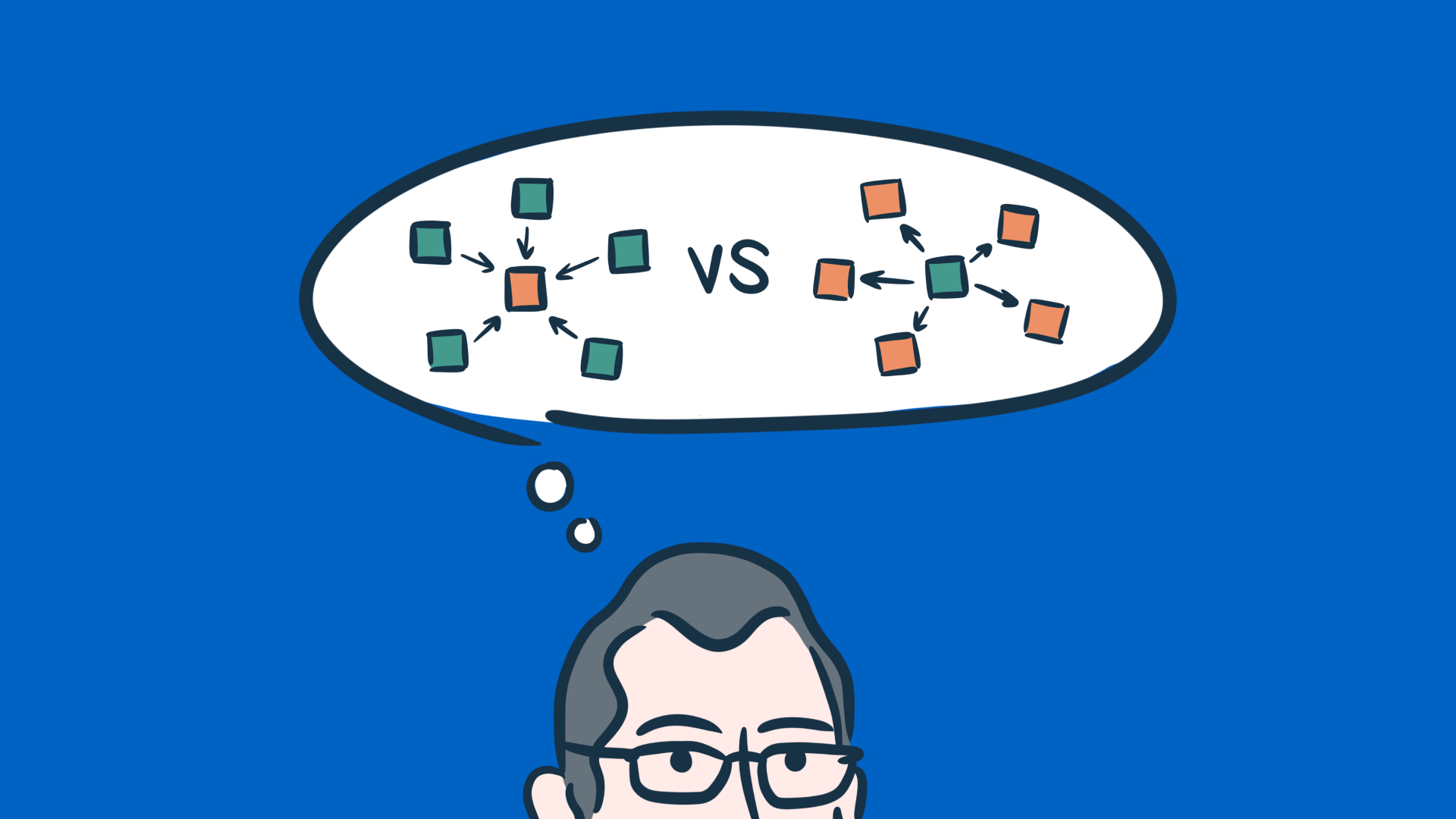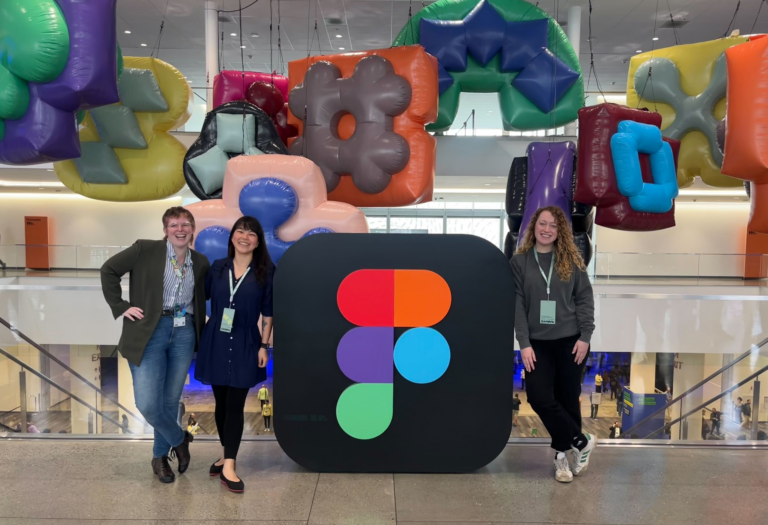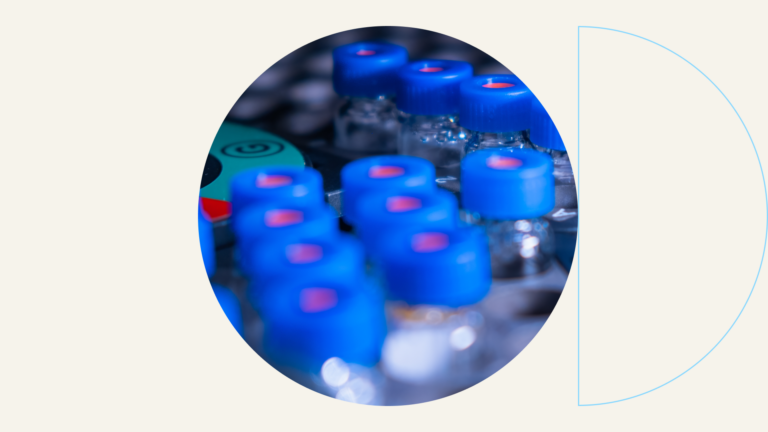Divergent vs. Convergent Thinking in Creative Environments

Divergent and convergent thinking are two complementary methods to explore ideas, work towards goals, and address challenges. In the design world—where we’re constantly employing design thinking in our work—both approaches are necessary and lead to unique solutions for challenges that require exploration and creativity.
Divergent and convergent thinking are both methods of thinking that are so deeply integrated into what we do, we often don’t stop to think about the theories behind them. We often rail against tired concepts in our industry like “think outside the box,” yet we still try to capture what that phrase meant before it became a cliché. It’s good to go back to the basics once in a while.
What is divergent thinking?
Divergent thinking is taking a challenge and attempting to identify all the possible drivers of that challenge, then listing all of the ways those drivers can be addressed.
Divergent thinking typically happens in open, free-flowing, spontaneous environments where multiple creative ideas can be shared and considered. Typically, this means that everyone involved in this type of thinking will look for unexpected combinations and connections between remote associations. Divergent thinking sparks creativity specifically because of its spontaneous, non-linear nature.
When setting up a divergent thinking exercise, participants need to know that all ideas are valid. It’s also important to ensure that all participants can contribute equally—not just the most vocal. I often recommend using methods such as the first few steps of nominal group technique to ensure all voices are heard.
In practice, divergent thinking is often associated with brainstorming or free writing—but it’s more than that. You need to do a small amount of analysis so that you don’t put too many tools in your Swiss army knife, but you shouldn’t hamstring yourself with too many constraints, either.
Divergent thinking techniques
As mentioned above, there are many different techniques you can use to stimulate creativity and divergent thinking. It’s important to find the ones that work best for you—everyone is different and it’s okay to try something, realize it doesn’t work, and move onto another technique. As a user experience company, we utilize many divergent thinking techniques:
- Freewriting: this technique is helpful when you need to focus on one topic. Choose an allotted amount of time and start writing, don’t worry about revising or proofreading just let the thoughts spill onto the page (or screen). This technique allows a lot of thought generation without blockers that you can come back to, restructure, and organize.
- Brainstorming: this common group-problem solving technique involves contribution of ideas from multiple people and discussion around the ideas provided. Encouraging all to participate and not be afraid of right or wrong answers can help improve the session and divergent thinking.
- Nominal Group Technique: this is a form of structured brainstorming that starts with individuals silently generating ideas, then moves through sharing and discussion of those ideas. The silent generation of ideas ensures everyone in the room has an equal voice, rather than just the most gregarious.
- Keeping a journal: a great technique that allows you to record whatever spontaneous thought comes to your mind. Writing down thoughts when they happen allows you to revisit them later. Our designers enjoy journaling, check out how one of our experience designers used a work journal.
- Scenario role play: a technique that involves providing a prompt that users put themselves into and act out the scenario using their imagination and putting themselves into the shoes of the characters (users of a product).
- Mind mapping: This visual technique involves turning brainstormed ideas into a visual map that shows the relations of the brainstorming. A common type of mapping our researchers enjoy—affinity mapping, allows topics to be synthesized and organized to work through later.
Divergent thinking examples
User experience designers practice divergent thinking in a few ways. We use divergent thinking in the initial stages of ideation on a project or task—when we have a challenge to solve and we need to brainstorm or iterate on creative solutions. We’ll also employ divergent thinking in the process of thinking through, at a high level, how to help make a client’s website, app, or digital tool more competitive or innovative in the market. Divergent thinking can also be used after you have synthesized research data during discovery or validation phases of your work.
One great example of divergent thinking in action is in the early days of Twitter. Twitter took a Minimum Viable Product (MVP) approach to their application. They created an online service without a clear practical application or market, launched it to see how people would use it, then refined Twitter to highlight those uses. This doesn’t mean that launching something and then figuring out what the market is for it is a bullet-proof strategy. In Twitter’s case, it worked. In most cases, it doesn’t. You just don’t hear about the failures.
At Think Company, we employ creativity and divergent thinking throughout our project work. In the initial stages of a project, the team will use divergent techniques to explore concepts with stakeholders and potential target audience members. In the midst of a project, our software engineers may use the same techniques to tackle technology challenges with designers. When projects wrap up, retrospectives always start with open-ended, exploratory sessions on what worked, what could be improved, and what worked so well that we need to operationalize it for future projects.
What is convergent thinking?
Convergent thinking, on the other hand, is known as the practice of selecting the optimal solution from a finite set of ideas collected from different sources in order to solve a discrete challenge quickly and efficiently.
Convergent thinking is best practiced at times when you need an answer, and you believe you have access to the data and information you need to guide a decision or solution. Convergent thinking typically calls for speed, accuracy, and knowledge on a subject, so it’s best used when the team has access to experts and relevant data. The team will analyze and bring that information together into an educated decision.
Convergent thinking techniques
So how do you get started? There are many convergent technique that can be used and below are a few that our teams use regularly:
- Grouping: In order to understand information that comes from a divergent thinking exercise we need to group together similar ideas and hypotheses. This is when mapping comes into play. We like to use tools like FigJam and Miro (or if you’re in person, a good old whiteboard and post-its) to start organizing similar ideas into categories. This helps us take a large amount of data or ideas and narrow them down to a more succinct data reference.
- Prioritizing: From there, it’s important to decide which concepts are crucial and which can come a little later on (if at all). When thinking about our product design mapping, that might mean we prioritize features around mobile experience if the application is primarily mobile, and we place any desktop capabilities a little lower on the priority list.
- Dot-voting: This technique allows each participant to join in a prioritization activity regardless of their participation style or preferences. Individuals are given a set number of dots and apply them to the choices in a list.
- Filtering: Importantly, we can’t do it all. Applying filtering convergent techniques allows us to eliminate ideas or concepts that we won’t take action on (maybe because of time, lift, or importance). Ultimately, we can’t review copious amounts of data or complete every feature that comes to the table, filtering helps us remove those unreachable ideas and focus where we need to.
Convergent thinking examples
There are many examples of convergent thinking that demonstrate the necessity of this technique, including in our own industry. We’re often asked questions by clients that have one, clear answer—and we know that because our team has spent years accumulating user experience design and technology knowledge on specific types of problems, goals, and decisions. Also, as an evidence-based company, gathering user and customer feedback often helps point us to very clear design solutions.
Consider, also, that scene in Apollo 13 where the astronauts are trying to generate enough power to get the capsule back to Earth. The chief orders his team to make the capsule simulator “cold and dark,” and create “the exact same conditions they’ve got”—right down to the readings on all of the instrument panels. One of his engineers says “I need a flashlight,” and the response is, “That’s not what they have up there. Don’t give me anything they don’t have on board.” The challenge is discrete and the solutions are limited to the constraints of a hard reality.
At Think Company, we often use convergent design exercises after we have collected evidence on the subject at hand. In the wake of technology discovery, design validation, or usability studies, our experts are able to process the data collected along with concepts developed during divergent exercises, to select the most effective path forward.
What is the difference between divergent and convergent thinking?
Convergent and divergent thinking are both modes of thinking, but lie on the opposite end of the spectrum from one another. Divergent thinking is rooted in creativity; it is spontaneous and non-linear—looking at all sorts of possible solutions. Whereas convergent thinking is rooted in structure; it is all about efficiency and is linear—looking for the best possible solution.
A common practice for problem solving is to use a combination of both. Start with a divergent brainstorming session to generate as many ideas as possible. Move into a mapping exercise to group and prioritize the initiatives that came from the brainstorm.
Divergent vs. convergent thinking problem-solving example
Here’s an example of the same problem framed for divergent and convergent thinking:
- Divergent thinking: My company laptop is malfunctioning. I need my laptop to complete a project by the end of tomorrow. I work remotely and IT can’t ship a replacement until after the deadline. What can I do to make sure my project is completed by the deadline?
- Convergent thinking: My company laptop is malfunctioning. I need my laptop to complete a project by the end of tomorrow. I work remotely and IT can’t ship a replacement until after the deadline. Name three people who have the context and skills to finish the project so I can contact them to check availability.
The problem is the same, but the questions change slightly. The convergent example is focused on exploring options for delegating the work, whereas the divergent example doesn’t rule out options like fixing the laptop locally or using another device to get by until a new one is shipped.
Both examples will produce valuable results. The convergent example may be driven by other issues. Perhaps I’m only authorized to login to accounts on my secured work laptop. The divergent example may take more time to investigate, but you may save the cost and resources it takes to get a brand new laptop shipped. In thinking through both you may discover an option that is completely different from what the user has asked you to do. As designers, we need to use both methods of thinking to best serve our clients.
Divergent thinking, convergent thinking, and creativity
Both methods of thinking are important and necessary for creative work, and for work that requires building solutions for complex problems. So while divergent thinking is typically associated with creativity and convergent thinking is closely associated with logic, if you only use one method it’ll be more difficult to come up with an innovative and elegant solution to the problem. That’s why we tend to use both types of thinking.
However, there are times when one way of thinking might be best. The challenge in the context of design thinking comes in framing the problems correctly if you want a specific result. Frame it one way, and you may be leading the group to spend two months brainstorming when all you needed was a hammer four weeks ago. Frame it the other way, and you could end up with a team chasing every problem with the same old hammer while your competition invented the screwdriver.
Embracing divergent and convergent thinking at Think Company
Since we have a clear idea of how each method of thinking works, part of our job is to determine which one best suits clients and project goals during the many phases of our work. We have learned to embrace these thinking styles in a number of ways, including:
- Collaborative Think sessions with clients focused on design thinking, ideation, and brainstorming
- Technology discovery work to identify internal experts and gather knowledge on platforms and process
- Regular sprint reviews and other project rituals to review, synthesize, and ideate around research findings
- Ongoing internal collaboration with different departments to bring in subject matter experts
- Design validation and usability studies to collect evidence for convergent exercises
- Retrospectives focused on continuous improvement and knowledge sharing
- Ideation challenges for teams to keep creative work fun and innovative
Finally, the most important element of embracing divergent and convergent thinking techniques is getting support from leadership during divergent and convergent thinking exercises. Stakeholder buy-in is easier to accomplish when you are clear about the purpose and goals of an exercise. Giving an organizational leader a heads up that tomorrow’s exercise will be about generating ideas, and that their participation and support is critical to a successful session, can make or break the exercise.
If you’re looking to apply divergent and convergent thinking processes at your own company, let’s kick off a conversation.



